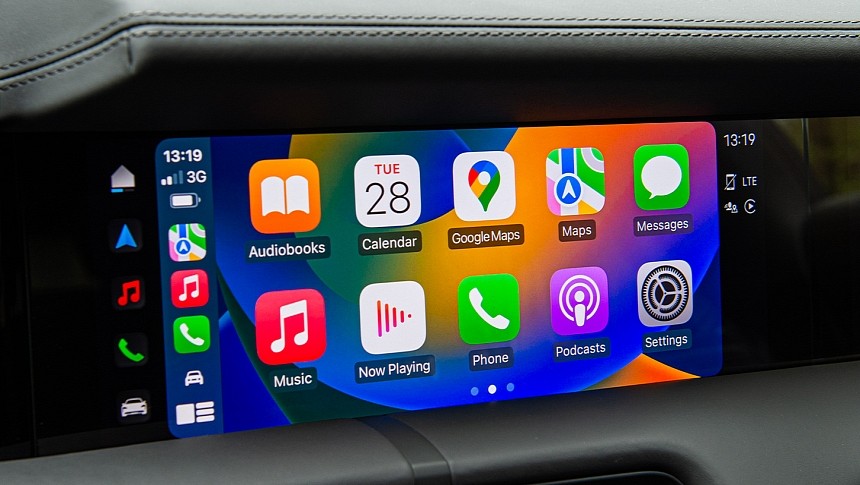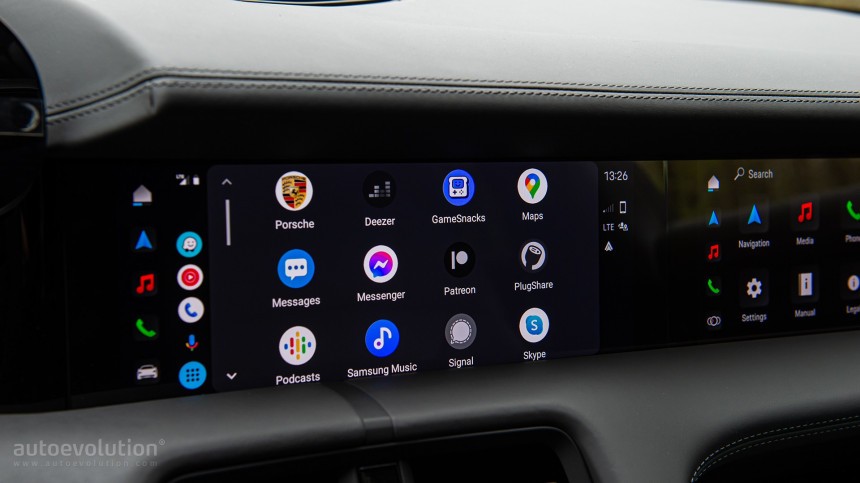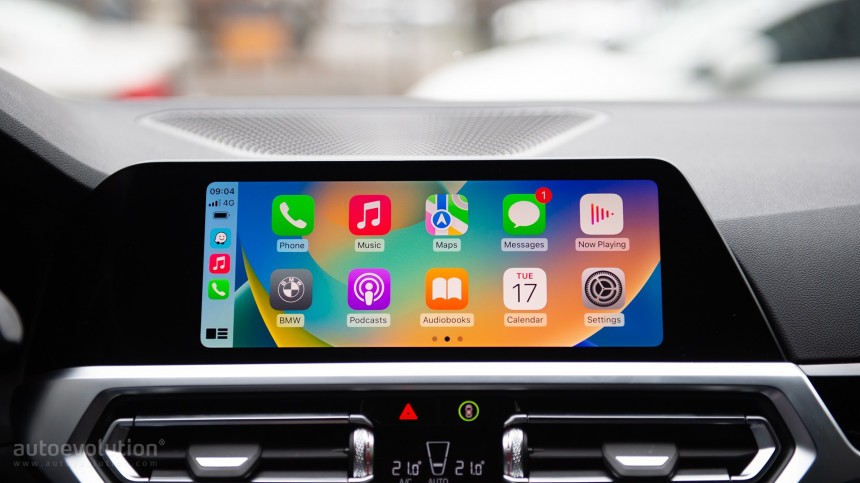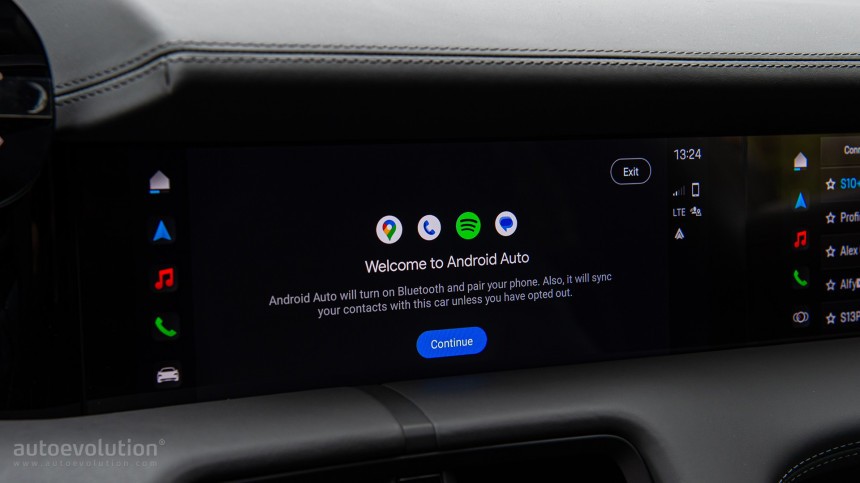Android Auto and CarPlay have become must-have features for modern drivers, and many people wouldn’t even consider buying a car that comes without them.
Apple's data reveals that 79 percent of Americans are ready to say no to a new vehicle without CarPlay. Sure enough, fitting Android Auto and CarPlay using aftermarket solutions is always possible, but at the end of the day, drivers love these phone projection systems and don't want to drive a car without them.
Few people remember the days when Android Auto and CarPlay were not around.
Android Auto came to be in March 2015 after it originally appeared as a preview at Google I/O in 2014. The first carmaker to support Android Auto was Hyundai, who brought Google's new and still mysterious at that time to the 2015 Sonata. Since then, carmakers have joined the Android Auto adopter group one by one, so today, the application can be used in the majority of new cars out there.
CarPlay, on the other hand, was originally announced as "iOS in the car" at the 2013 edition of WWDC, Apple's annual conference where the iPhone maker typically unveils its latest software ideas. iOS in the car was eventually renamed to CarPlay, making its first public appearance at the 2014 Geneva Motor Show in March 2014. Volvo, Ferrari, and Mercedes were the first carmakers to use CarPlay, and once again, the rest of the companies followed in their footsteps and adopted the system en-masse in the next few years.
It's nearly impossible to find a new car without Android Auto and CarPlay these days, except for Tesla, Rivian, and soon General Motors models. While the benefits of mobile phone projection are more than obvious, a handful of carmakers still stick with their infotainment systems, as they don't want to give in control to tech companies.
Drivers only need to connect their smartphones to a compatible head unit, either with a cable or wireless. Once the connection is established, the head unit launches the Android Auto or CarPlay interface, offering one-tap access to apps like Google Maps, Waze, Spotify, and others.
Thanks to digital assistant integration, voice can control nearly everything, so touch input is rarely required. This is one efficient way to reduce the distraction behind the wheel, as users don't even need to look at the screen to interact with their apps.
Both CarPlay and Android Auto come with a very straightforward approach and are extremely easy to configure. They work out of the box with minimal setup, so as long as you don't encounter a bug, it's enough to connect the phone to the head unit, and you're ready to go.
For carmakers, it all meant they no longer had to care about software development. Their infotainment systems were ridiculously bad, and essential software, such as navigation apps, still required regular updates that sometimes required a visit to the dealership.
The inconvenient approach could be resolved by simply adding support for CarPlay and Android Auto. Customers rapidly started loving the apps, and carmakers did the same, too, as Google and Apple became the companies in charge of delivering a smooth experience behind the wheel.
With smartphone sales skyrocketing and a phone landing in every pocket, Android Auto and CarPlay eventually turned into incredibly popular vehicle options. As such, carmakers continued to offer them, letting Google and Apple control the software side of their infotainment systems.
Times have changed, and auto manufacturers now see infotainment as a source of revenue. They're trying to claim it back from the likes of Google and Apple after years of highlighting the benefits of Android Auto and CarPlay.
But with over 1.2 billion smartphones sold in 2022 alone (according to IDC data), running CarPlay and Android Auto remains extremely convenient. And given carmakers want to turn the infotainment system into a money-making machine, it's not a surprise that customers don't agree with paying for something they can get for free.
Both Google and Apple are working around the clock on making Android Auto and CarPlay better, eventually opening the doors to more app categories. As such, the two systems get new features that allow drivers to do more from their cars, all by just connecting their phones to the head unit.
At the end of the day, convincing customers to pay for infotainment after years of lazy software development is going to be difficult, if not impossible. Android Auto and CarPlay are both here to stay, and no matter what General Motors and other carmakers think, the transition to a world without them isn't going to be a smooth ride.
Few people remember the days when Android Auto and CarPlay were not around.
Android Auto came to be in March 2015 after it originally appeared as a preview at Google I/O in 2014. The first carmaker to support Android Auto was Hyundai, who brought Google's new and still mysterious at that time to the 2015 Sonata. Since then, carmakers have joined the Android Auto adopter group one by one, so today, the application can be used in the majority of new cars out there.
CarPlay, on the other hand, was originally announced as "iOS in the car" at the 2013 edition of WWDC, Apple's annual conference where the iPhone maker typically unveils its latest software ideas. iOS in the car was eventually renamed to CarPlay, making its first public appearance at the 2014 Geneva Motor Show in March 2014. Volvo, Ferrari, and Mercedes were the first carmakers to use CarPlay, and once again, the rest of the companies followed in their footsteps and adopted the system en-masse in the next few years.
It's nearly impossible to find a new car without Android Auto and CarPlay these days, except for Tesla, Rivian, and soon General Motors models. While the benefits of mobile phone projection are more than obvious, a handful of carmakers still stick with their infotainment systems, as they don't want to give in control to tech companies.
How they work
Using Android Auto and CarPlay is extremely simple and convenient. The latter is exactly the reason why killing them off is almost impossible these days.Drivers only need to connect their smartphones to a compatible head unit, either with a cable or wireless. Once the connection is established, the head unit launches the Android Auto or CarPlay interface, offering one-tap access to apps like Google Maps, Waze, Spotify, and others.
Thanks to digital assistant integration, voice can control nearly everything, so touch input is rarely required. This is one efficient way to reduce the distraction behind the wheel, as users don't even need to look at the screen to interact with their apps.
Both CarPlay and Android Auto come with a very straightforward approach and are extremely easy to configure. They work out of the box with minimal setup, so as long as you don't encounter a bug, it's enough to connect the phone to the head unit, and you're ready to go.
Android Auto and CarPlay are here to stay
Both CarPlay and Android Auto landed at a time when carmakers did not care about infotainment. Given their lazy software efforts, the two apps were precisely what they needed: a way to get easy access to navigation solutions and other apps whose popularity was already on the rise.For carmakers, it all meant they no longer had to care about software development. Their infotainment systems were ridiculously bad, and essential software, such as navigation apps, still required regular updates that sometimes required a visit to the dealership.
The inconvenient approach could be resolved by simply adding support for CarPlay and Android Auto. Customers rapidly started loving the apps, and carmakers did the same, too, as Google and Apple became the companies in charge of delivering a smooth experience behind the wheel.
With smartphone sales skyrocketing and a phone landing in every pocket, Android Auto and CarPlay eventually turned into incredibly popular vehicle options. As such, carmakers continued to offer them, letting Google and Apple control the software side of their infotainment systems.
But with over 1.2 billion smartphones sold in 2022 alone (according to IDC data), running CarPlay and Android Auto remains extremely convenient. And given carmakers want to turn the infotainment system into a money-making machine, it's not a surprise that customers don't agree with paying for something they can get for free.
Both Google and Apple are working around the clock on making Android Auto and CarPlay better, eventually opening the doors to more app categories. As such, the two systems get new features that allow drivers to do more from their cars, all by just connecting their phones to the head unit.
At the end of the day, convincing customers to pay for infotainment after years of lazy software development is going to be difficult, if not impossible. Android Auto and CarPlay are both here to stay, and no matter what General Motors and other carmakers think, the transition to a world without them isn't going to be a smooth ride.










